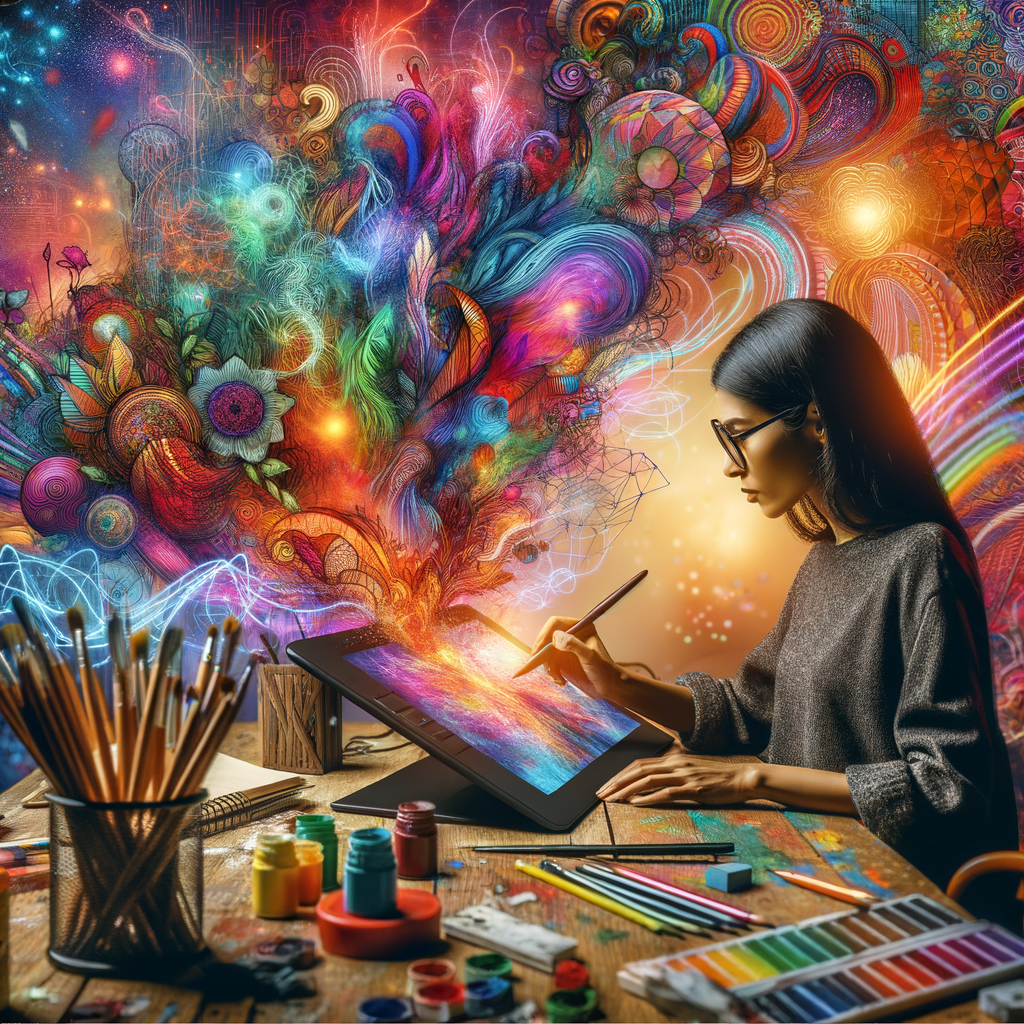
In the digital age, where traditional mediums are complemented and sometimes overshadowed by digital technology, mastering digital art has become an essential skill for both aspiring and established artists. Whether you're a beginner eager to explore the world of digital painting or a seasoned artist looking to refine your skills, this guide will provide you with valuable insights and practical tips. In this article, we will delve into key techniques, recommend tools, and share tips that will enhance your digital art journey and help you unleash your creative potential.
Digital art offers a vast canvas of possibilities, allowing artists to experiment with different styles, techniques, and tools. As you embark on your journey in digital art, understanding the fundamental techniques can significantly improve your workflow and results.
1. Understanding Digital Art Techniques
Digital art encompasses a wide range of techniques that artists can utilize. From basic drawing skills to advanced painting methods, here are some essential techniques that every digital artist should master:
- Layering: One of the greatest advantages of digital art is the ability to use layers. Layers allow you to separate different elements of your artwork, making it easy to edit and revise without affecting the entire piece.
- Brush Techniques: Digital painting software comes equipped with various brushes that can replicate traditional media such as watercolor, oil paint, and charcoal. Experiment with different brushes to find the ones that suit your style.
- Blending: Learning to blend colors effectively can add depth and realism to your artwork. Use blending modes and opacity settings to achieve smoother transitions.
- Selection Tools: Mastering selection tools (such as lasso and magic wand) is critical for creating precise shapes and adjustments. These tools can help isolate areas for detailed work and enhance your overall composition.
- Texturing: Incorporating textures can add richness to your digital art. You can create your own textures or use traditional textures by scanning them and overlaying them digitally.
2. Choosing the Right Tools
Selecting the right tools is crucial for creating stunning digital artwork. Here are some key tools every digital artist should consider:
- Graphics Tablet: A graphics tablet is an essential tool for anyone serious about digital art. It provides a more natural drawing experience compared to a mouse. Tablets range from entry-level options to professional-grade devices, so choose one that meets your needs and budget.
- Software: There are numerous software options available, each with its features. Popular choices include Adobe Photoshop, Corel Painter, and Clip Studio Paint. Additionally, programs like Procreate offer powerful tools specifically for iPad users.
- Stylus Pen: Investing in a high-quality stylus can enhance your drawing experience. Look for a stylus that offers pressure sensitivity and customizable buttons to streamline your workflow.
3. Tips for Improving Your Digital Art Skills
To become a proficient digital artist, it's important to practice regularly and seek feedback. Here are some tips to help you improve your skills:
- Practice Daily: Set aside time each day to draw or paint. Consistent practice is key to developing your skills.
- Seek Feedback: Share your work with fellow artists or online communities to receive constructive feedback. This can help you identify areas for improvement and motivate you to keep creating.
- Study Art Fundamentals: Strengthening your understanding of art fundamentals like composition, color theory, and anatomy can significantly improve your work.
- Follow Tutorials: There are countless online tutorials available that cover various techniques and software usage. Take advantage of these resources to learn from experienced artists.
- Experiment with Styles: Don't be afraid to experiment with different styles and techniques. This exploration can lead to new discoveries and growth as an artist.
4. Staying Inspired
Inspiration is vital for creativity. Here are some ways to keep your artistic spirit alive:
- Join Art Communities: Engaging with other artists can foster a sense of camaraderie and inspiration. Participate in forums, attend workshops, or join local art groups.
- Explore Different Mediums: Sometimes stepping away from digital art and exploring traditional media can reignite your passion and inspire new ideas.
- Follow Your Favorite Artists: Keep an eye on the work of artists you admire. Analyzing their techniques can provide insight and motivation.
5. Building Your Portfolio
Your portfolio is a reflection of your artistic journey. As you create digital art, it’s essential to curate a diverse and high-quality portfolio:
- Select Your Best Work: Choose artwork that showcases your skills and unique style. Quality over quantity is essential.
- Keep It Updated: Regularly update your portfolio with new pieces to reflect your growth as an artist.
- Online Presence: Consider creating a website or using platforms like ArtStation or Behance to showcase your portfolio and connect with potential clients.
Conclusion
As you embark on your journey to mastering digital art, remember to enjoy the process and allow your creativity to flourish. With the right techniques, tools, and dedication, you can create stunning digital artwork that reflects your unique voice as an artist. Embrace the digital canvas and let your imagination soar!

